Learning the notes across your guitar’s fretboard is a foundational skill that will drastically improve your playing. Knowing All Guitar Notes empowers you to understand music theory, build chords beyond basic shapes, and navigate the fretboard with confidence. While the seemingly long expanse of frets might appear daunting at first, grasping the layout of all guitar notes is more accessible than you think. With a structured approach and consistent practice, you can easily master this essential aspect of guitar playing.
The Natural Musical Alphabet: Your Starting Point
To begin understanding all guitar notes, it’s crucial to familiarize yourself with the basic musical alphabet. Unlike the regular alphabet, the musical alphabet consists of only seven natural notes: A, B, C, D, E, F, and G. These are considered “natural” because they don’t include sharps or flats. Sharps and flats, which we’ll explore next, fall in between these natural notes. Think of these seven notes as the building blocks upon which all other guitar notes are constructed.
 The Musical Alphabet
The Musical Alphabet
Sharps and Flats: Navigating the Half Steps
The concept of sharps (#) and flats (♭) introduces the idea of half-steps, which are the smallest intervals in Western music and crucial to understanding all guitar notes. Each fret on your guitar represents a half-step.
Sharps represent a half-step up from a natural note. For example, moving one fret higher than A brings you to A#.
Flats are the opposite, representing a half-step down from a natural note. Moving one fret lower than A results in A♭.
Interestingly, the note between two natural notes can often be named in two ways – either as a sharp or a flat. For instance, the note between D and E can be called D# (D sharp, moving up from D) or E♭ (E flat, moving down from E). The choice between sharp or flat often depends on the musical key you’re playing in and the direction of melodic movement.
 Sharps & Flats
Sharps & Flats
Quick Tip: Visualize moving upwards on the fretboard as “sharpening” the note, and moving downwards as “flattening” it to help remember the direction each symbol represents.
The BC and EF Rule: Important Exceptions
A key rule to remember when learning all guitar notes is the “BC and EF rule.” This rule states that there is no sharp or flat between B and C, and between E and F. Instead, a half-step up from B leads directly to C, and a half-step down from F leads directly to E. This means that B-C and E-F are natural half-steps, unlike other natural notes which are typically a whole step apart (two frets).
String Names: Your Open String Starting Point
Understanding the names of your guitar strings in standard tuning is your first point of reference for learning all guitar notes. From the thickest to thinnest string, the standard tuning is E, A, D, G, B, and E. When you play an open string (without pressing down on any fret), you are playing these notes. Notice that the thickest (lowest) and thinnest (highest) strings are both E – this octave relationship will simplify learning the fretboard.
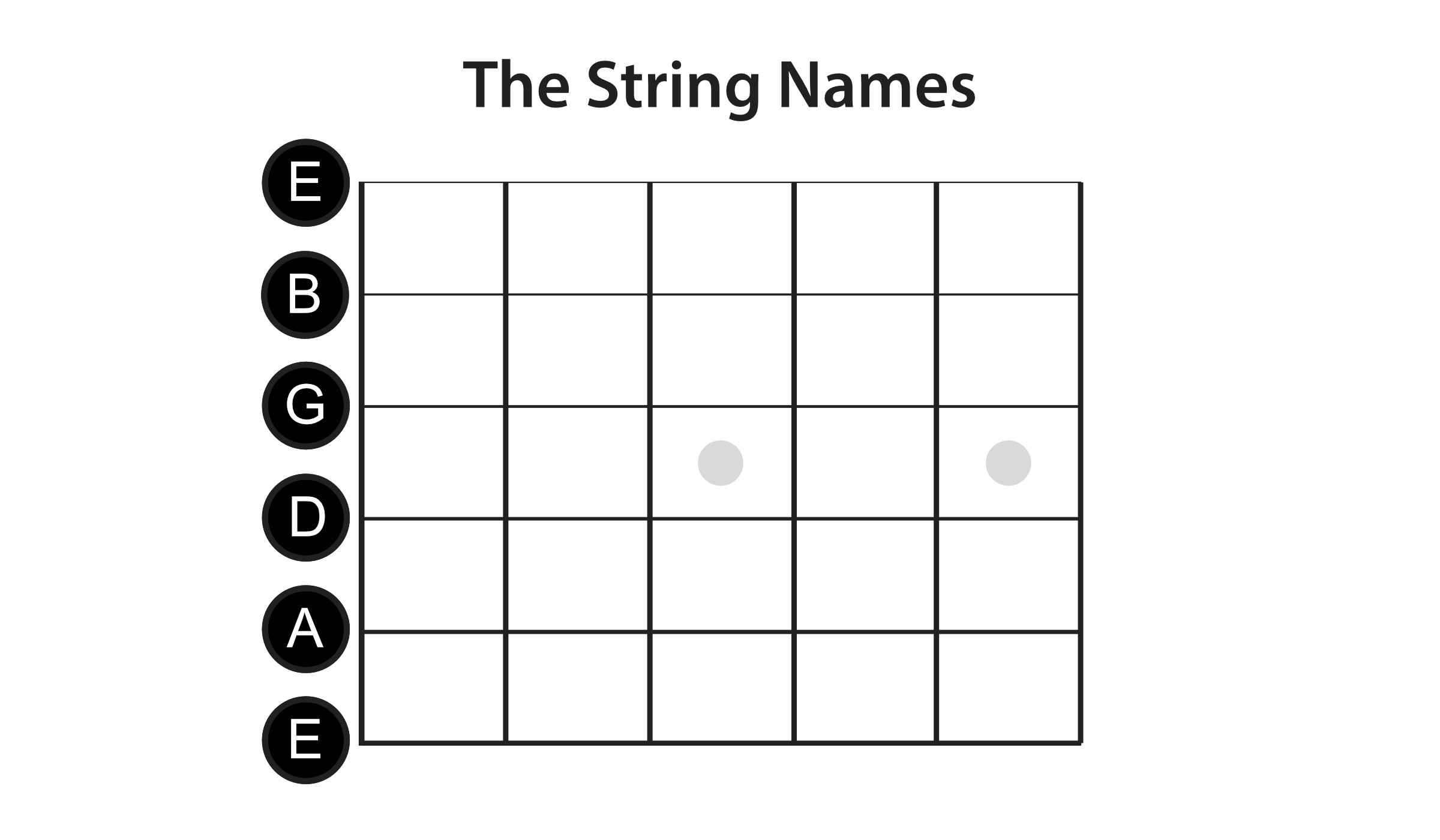 Guitar String Names
Guitar String Names
Counting Up the Frets: Mapping All Guitar Notes
With the musical alphabet, sharps/flats, and open string names in mind, you can now begin to map all guitar notes along the fretboard. Starting with an open string note, each subsequent fret represents a half-step increase. Simply apply the musical alphabet and the BC & EF rule as you move up the frets.
Let’s illustrate this string by string:
Low E String (6th String):
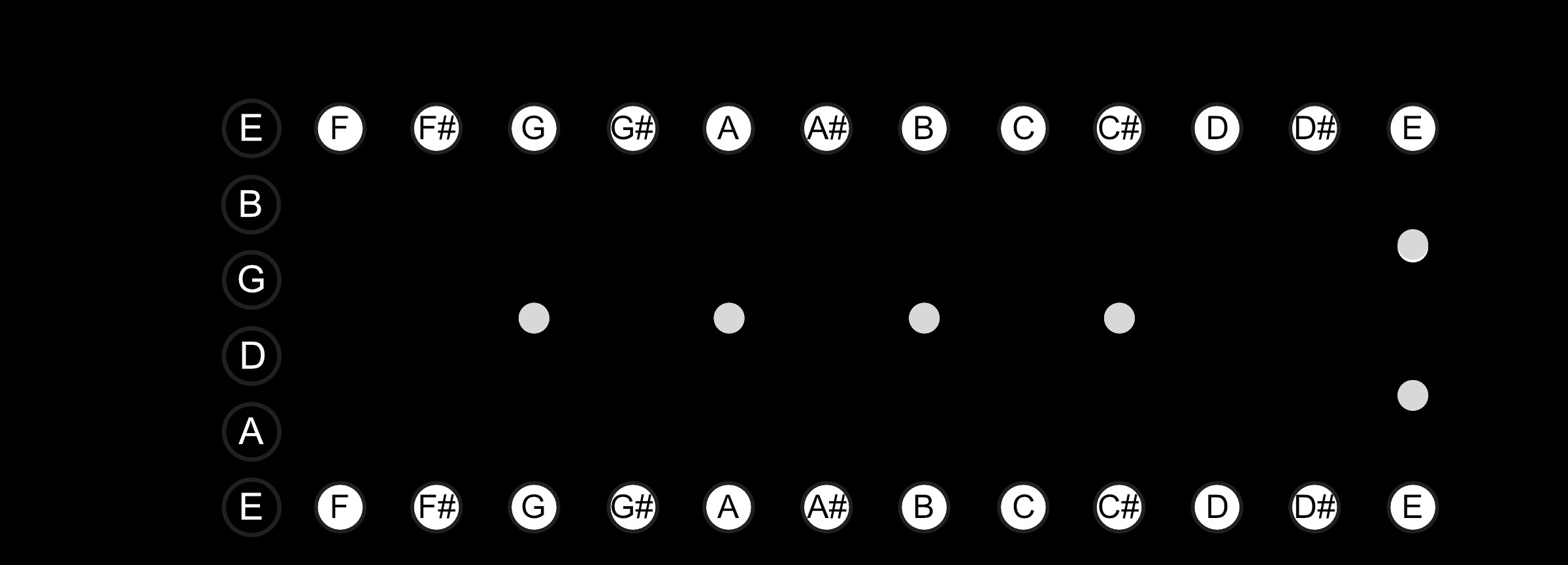 E String Note Names
E String Note Names
Starting with open E, fret 1 is F (half-step up from E), fret 2 is F# (half-step up from F), fret 3 is G, and so on.
A String (5th String):
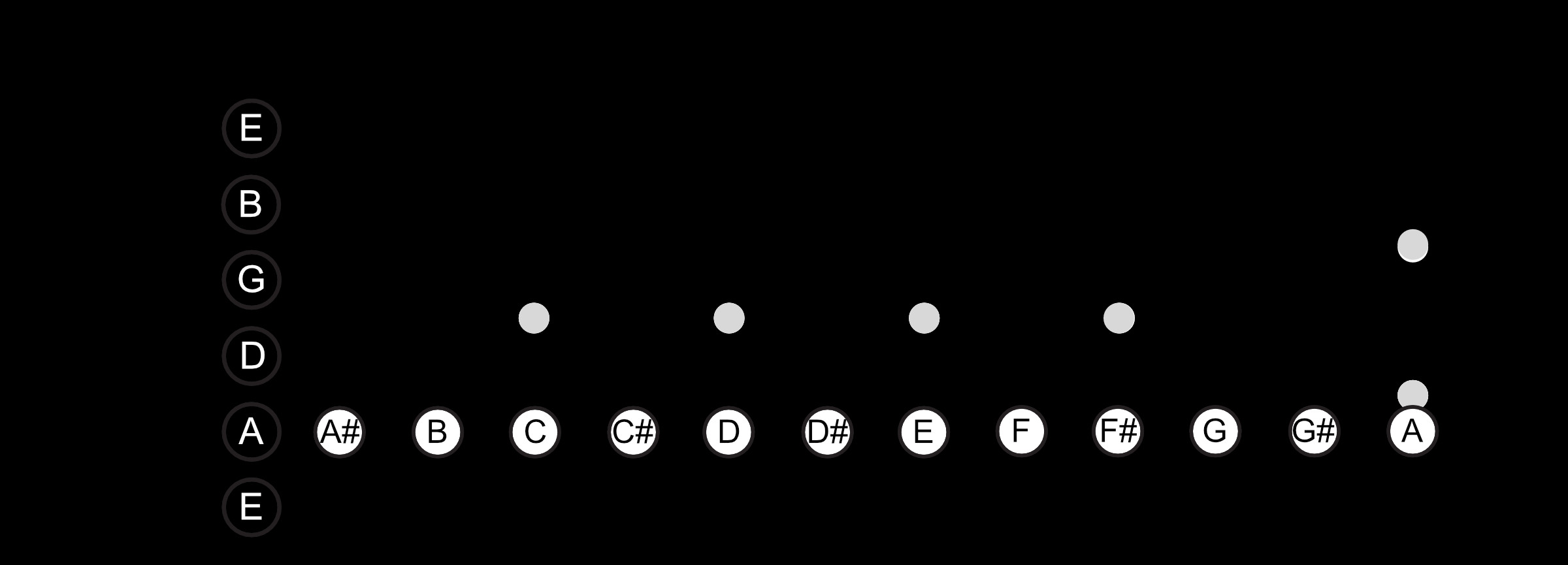 A String Note Names
A String Note Names
Starting with open A, fret 1 is A# (half-step up from A), fret 2 is B, fret 3 is C (remember the BC rule!), fret 4 is C#, and so forth.
D String (4th String):
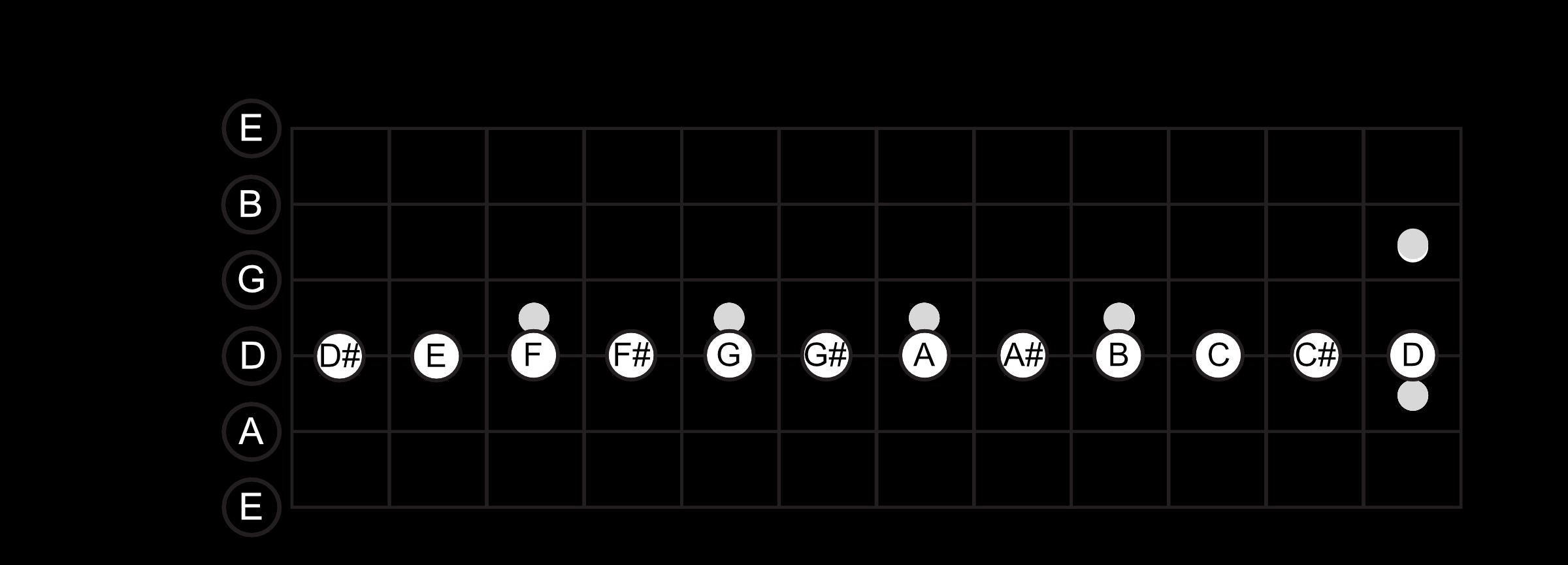 D String Note Names
D String Note Names
G String (3rd String):
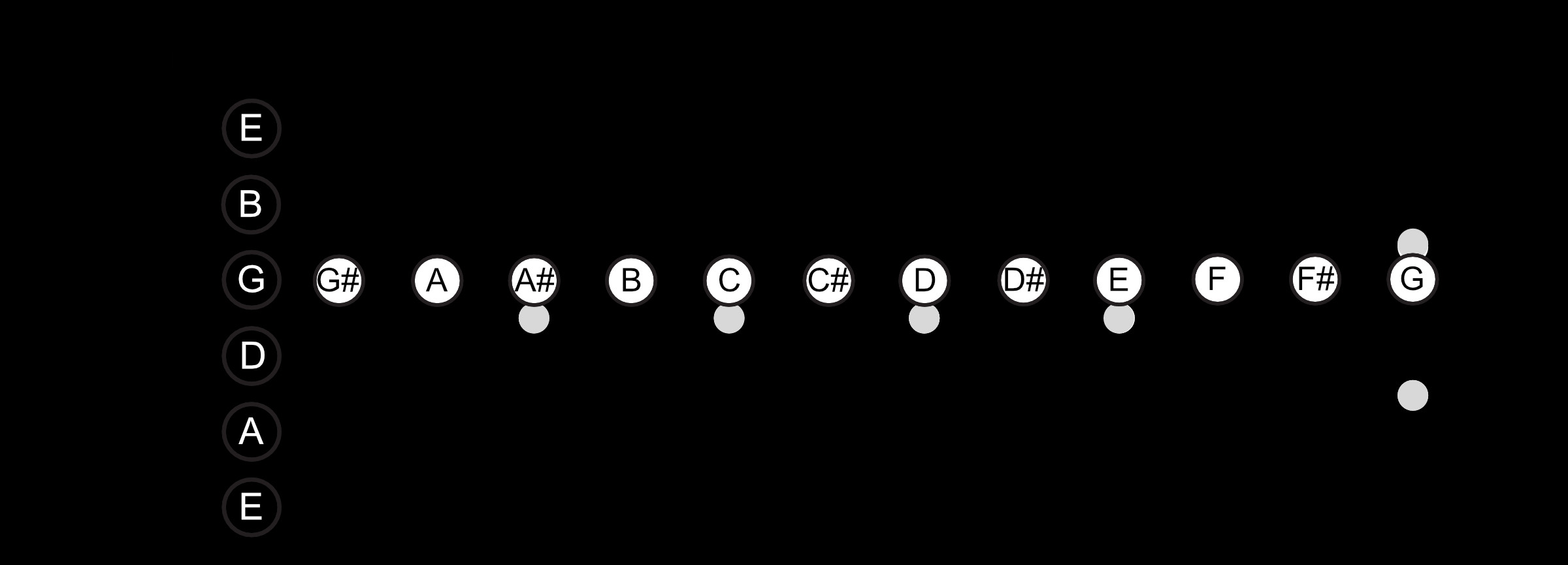 G String Note Names
G String Note Names
B String (2nd String):
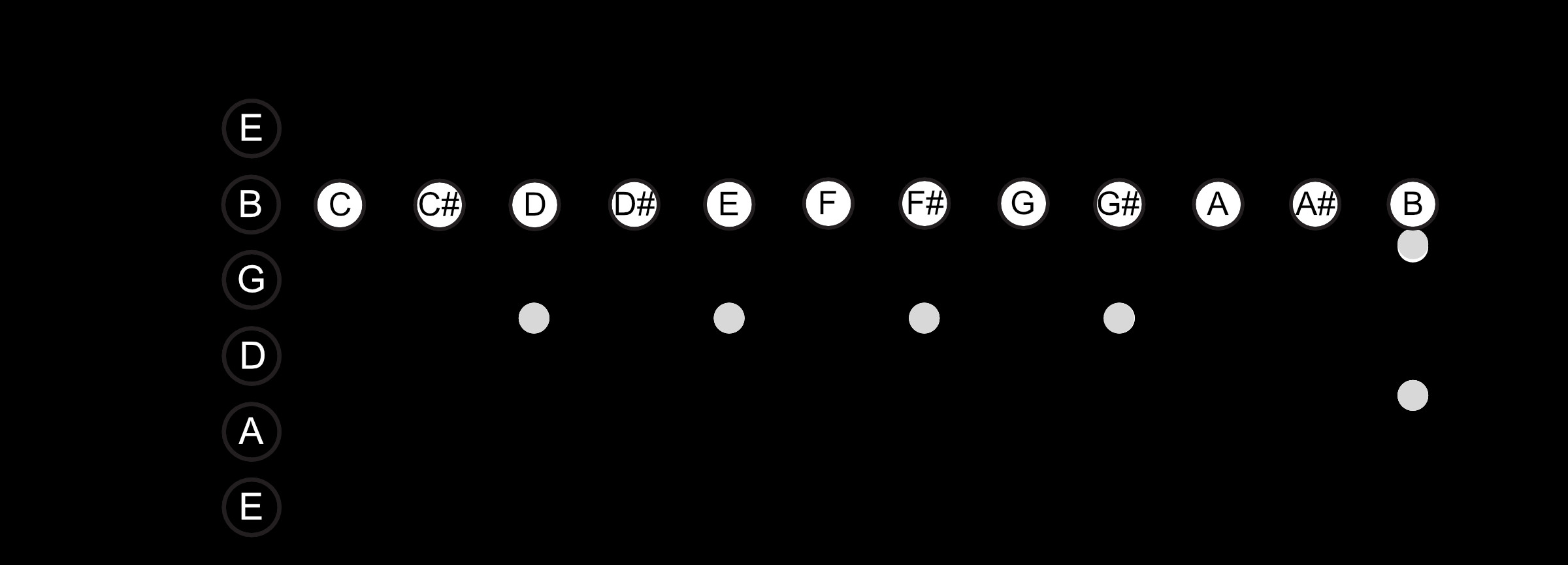 B String Note Names
B String Note Names
High E String (1st String):
The notes on the high E string will mirror the low E string, but an octave higher, demonstrating the repeating pattern across the fretboard.
The 12th Fret Octave: Recognizing the Pattern
Here’s a powerful trick to simplify learning all guitar notes: the notes repeat every 12 frets. If you look at the B string diagram, you’ll see that the 12th fret is also a B. The 13th fret will then be C, just like the 1st fret. This means you only need to truly learn the notes within the first 12 frets, as the patterns repeat beyond that point.
Octave Shapes: Connecting All Guitar Notes Across Strings
To further streamline fretboard navigation, learn “octave shapes.” Octaves are the same note, but at a higher or lower pitch. Knowing octave shapes allows you to quickly find the same note in different locations on the fretboard. A common octave shape involves moving two strings over and two frets up (or down).
For example, to find a G note based on the low E string:
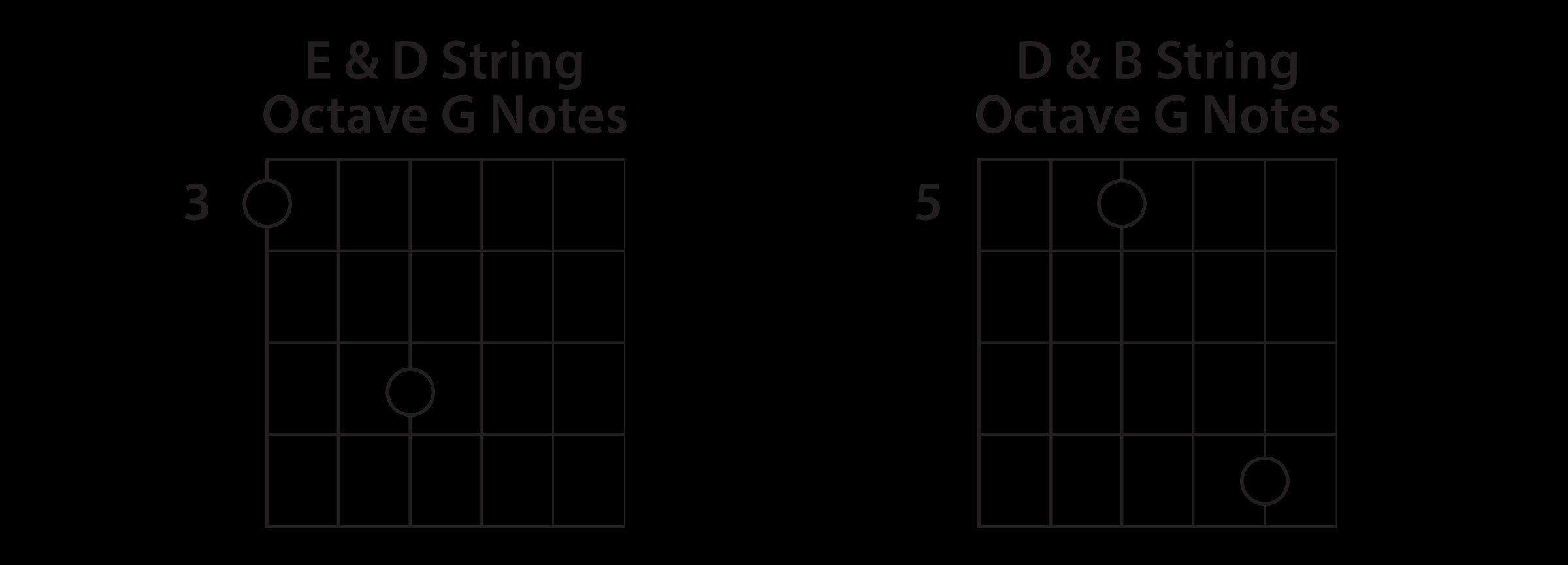 E & D String Octave Centers
E & D String Octave Centers
If you know the location of G on the E string, you can find another G on the D string two strings higher and two frets up. Similarly, you can use the A string as a reference:
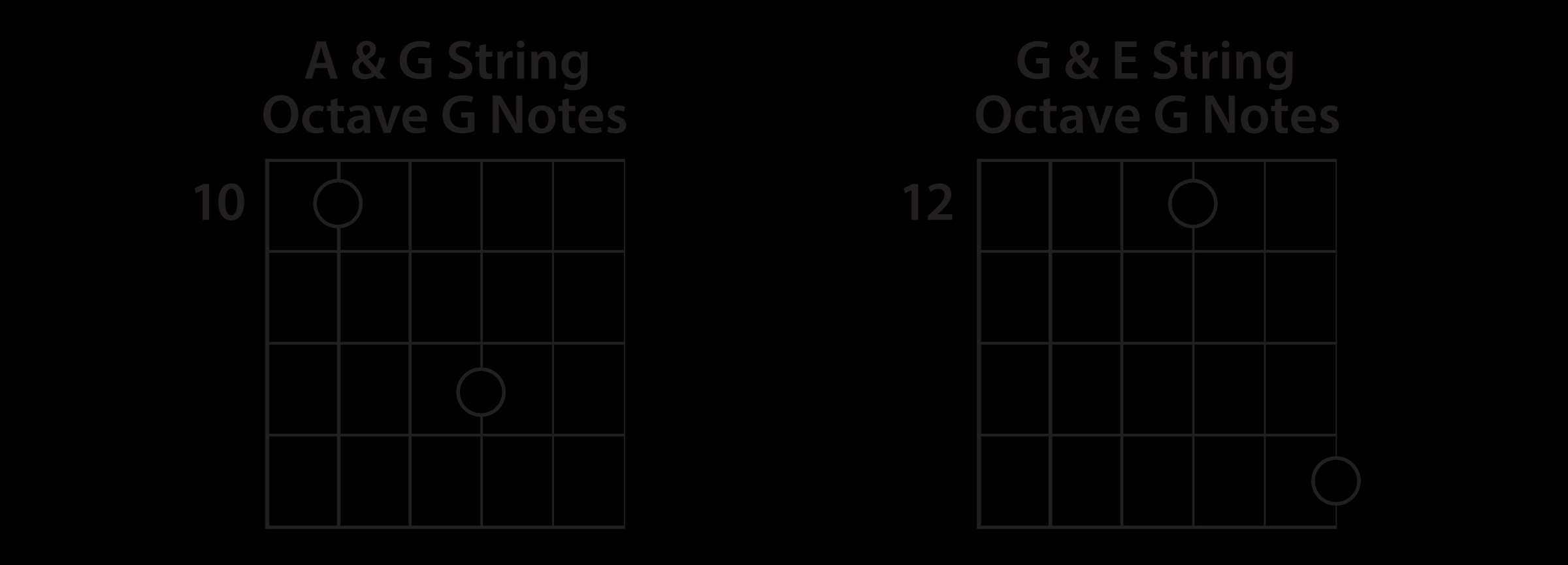 A & G String Octave Centers
A & G String Octave Centers
Knowing these octave relationships drastically reduces the memorization required to master all guitar notes.
Putting It All Together: Practice and Application
Mastering all guitar notes is a journey that combines understanding music theory with consistent practice on your instrument. Start by focusing on memorizing the notes on your E and A strings. Once these are solid, use octave shapes to expand your knowledge across the entire fretboard. Regularly practice scales, arpeggios, and even simple melodies, consciously naming the notes as you play them. This active recall is key to internalizing all guitar notes and unlocking your full potential on the guitar.
Explore further into guitar theory and fretboard navigation to deepen your understanding and musicality!

